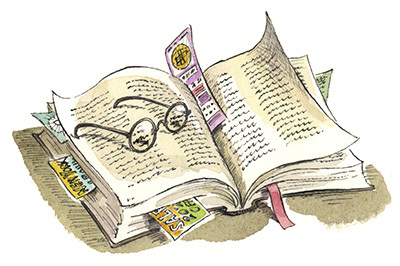You are probably reading this on a computer, a tablet, some kind of mobile device. That’s OK. I can accept that. We all consume a ton of stuff coming to us on electronic gadgets. And writers (like me) write stuff intended solely for digital media.
But you should know it’s not the same as reading these same words on paper.
I have suspected this for some time — my perceptions based on my own experience.

I am more likely to skim online content — not fully engaged, cruising over text looking for highlights, bullet points, the pertinent “take-aways,” while also trying to ignore pop-ups, ads and other distractions. Some call this “information foraging,” not reading. I do a lot of foraging in a day.
So here at the magazine, when I read a manuscript sent to us for potential publication, I print it out. I make sure I read the hard copy, not the screen version. That helps me really read the words, pay closer attention, fully engage the story being told, be with it as I read it.
I do this because my job as an editor asks me to care about the depth and quality and nuance and substance of the stories we tell on our pages. I also do this because, as a writer, I know the labor put into crafting prose. The writer deserves my attention to detail; I honor the transaction with my thoughtful focus, by being fully present during the encounter.
These intuitions have guided my thinking, but I am not a “digital native.” I have spent most of my life reading paper. Plus, I have worked in print journalism for almost 40 years. I am loyal to the profession that produced Life, Look and Harper’s, The Saturday Evening Post, Esquire, The Atlantic and Sports Illustrated — and Time and Newsweek in their day. I like to spread a newspaper across my desk; I eat lunch with a magazine next to my food, devouring good writing as happily as a good meal.
I am biased.
So when I heard of a campus presentation on the value of print, I went. The speaker just happened to be Dave Sullivan, a 1981 Notre Dame grad whose title is major market manager with Sappi, an international paper company. Bias there, too, probably.
But Sullivan emphasized print being a valuable part of any integrated marketing, branding or communications effort. We all know we live in an age of mixed media, multiple platforms and the decisions required when telling different stories in different ways. The magazine’s website, where this piece is being posted, is related to the print quarterly, but its approach is different. It’s a multimedia world.
Sullivan’s presentation, however, was not merely a pitch for paper. It centered on scientific studies and the work of Dr. David Eagleman, featured in a 6-hour PBS series on the brain and director of the Baylor College of Medicine’s Laboratory for Perception and Action. His work has to do with “haptics,” the study of touch and its power in communication and relationships.
Before speaking Sullivan handed out “A Communicator’s Guide to the Neuroscience of Touch,” a booklet that outlines the correlation between touch, perception, brain activity and effective communication. “The mind doesn’t really dwell in the brain,” it says, quoting Diane Ackerman from her book, A Natural History of the Senses, “but travels the whole body on caravans of hormone and enzyme, busily making sense of the compound wonders we catalogue as touch, taste, smell, hearing, vision.” That process is called “embodied cognition,” and the booklet says studies indicate “that how things feel to us drives our thoughts and behaviors.”
The booklet points to evidence that the brain processes text read on paper differently, “sustaining a deeper level of interest,” and enhancing “knowledge” as opposed to “recall.”
More than 100 published studies conducted by neuroscientists, psychologists and other researchers since the early 1990s have dominantly shown that people read best on paper. It makes the content more easily navigable, provides better mental “mapping” of information and enhances retention by taxing fewer cognitive resources.
“People understand and remember what they read on paper better than what they read on screen,” says Ferris Jabr, writing in Scientific American. “Researchers think the physicality of paper explains this discrepancy.” And according to the presentation, this applies to “digital natives” as well.
But the next step — that reading actively shapes brain development — deserves equal attention. Citing Proust and the Squid: The Story & Science of the Reading Brain by Maryanne Wolf, a neuroscientist and child development expert, the booklet explains: “The ability to derive meaning from abstract letterforms is not built into our neural circuitry; every generation has to learn it anew, and when we do it rearranges the way our brains are built. Reading and writing only happen when the brain grows the interconnected neural pathways for sharing information. And here it gets really interesting: the media we use to carry our messages have a lot to do with how those neural pathways get developed.”
The medium does not just carry the message; it helps shape the brain.
While we all agree that different tools should be used for different purposes, it is reassuring to know there’s scientific evidence to underscore the value of print. It’s especially gratifying for those of us who — not that long ago — were being told that print was dead and advised to reduce page count and begin the transition to online publishing.
Any enterprise hoping to last depends upon constant adaptation to shifting landscapes. But the qualities of reading still supersede the fast-food snacks gleaned from foraging.
Kerry Temple ’74 is editor of this magazine.